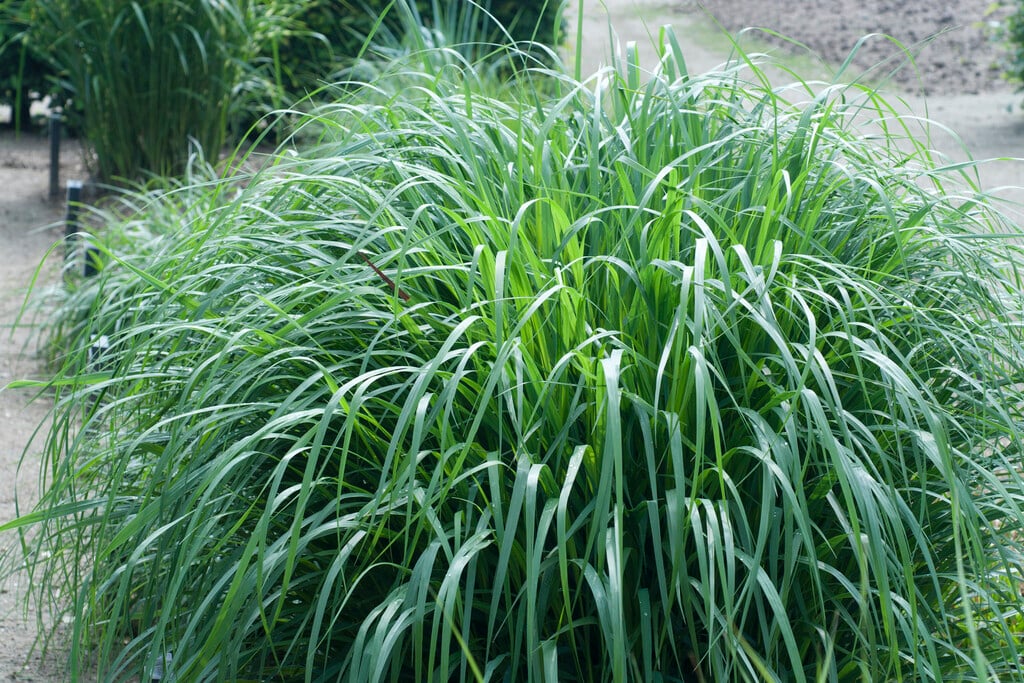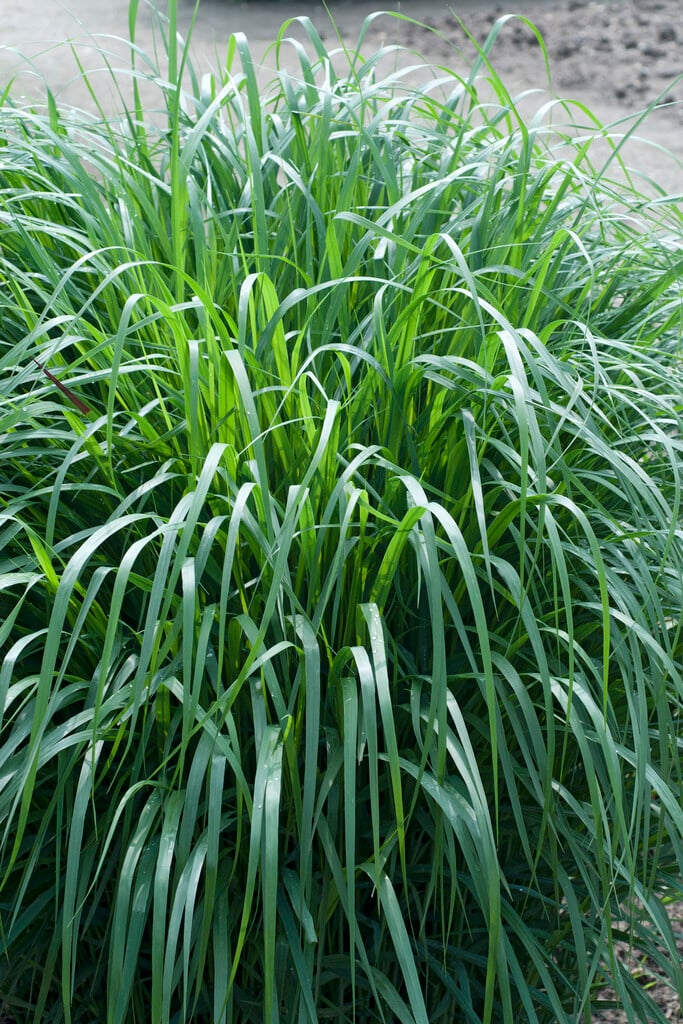Panicum virgatum
switch grass
A rhizomatous, deciduous grass forming clumps of upright, green to purple-blue, narrow, pointed leaves up to 50cm long and 15mm wide that turn yellow in autumn. From late summer into autumn, erect to arching flower stems bear airy panicles of tiny, nodding purple-brown flowers
Size
Ultimate height
0.5–1 metresTime to ultimate height
2–5 yearsUltimate spread
0.5–1 metresGrowing conditions
Moisture
Well–drainedpH
Acid, Alkaline, NeutralColour & scent
| Stem | Flower | Foliage | Fruit | |
| Spring | Green Blue Purple | |||
|---|---|---|---|---|
| Summer | Purple Green | Green Blue Purple | ||
| Autumn | Purple Brown | Yellow | ||
| Winter | Gold Brown |
Position
- Full sun
Aspect
South–facing or West–facing
Exposure
Exposed or ShelteredDrought resistance
Yes Hardiness
H5Botanical details
- Family
- Poaceae
- Native to GB / Ireland
- No
- Foliage
- Deciduous
- Habit
- Tufted
- Genus
Panicum can be annual or perennial, evergreen or deciduous grasses, with flat, narrowly lanceolate leaves, with large finely branched panicles of small spikelets in late summer or autumn
- Name status
Correct
How to grow
Cultivation
Grow in moderately fertile, well-drained soil in full sun. See ornamental grasses cultivation
Propagation
Propagate by seed or by division in spring
Suggested planting locations and garden types
- City and courtyard gardens
- Cottage and informal garden
- Gravel garden
- Prairie planting
- Wildlife gardens
- Cut flowers
- Flower borders and beds
Pruning
Remove dead foliage and old flowered stems in spring
Pests
Generally pest-free
Diseases
Generally disease-free
Love gardening
Sign up to receive regular gardening tips, inspiration, offers and more
View our Privacy Policy
Get involved
The Royal Horticultural Society is the UK’s leading gardening charity. We aim to enrich everyone’s life through plants, and make the UK a greener and more beautiful place.

